Where to sell used electronics: The top 10 marketplaces
Anyone else feel like the list of latest tech ‘must haves’ is evolving faster than Baby Reindeer memes these days?
This continuous moving and shaking in the electronics world means there’s a booming market of consumers looking to bag themselves a second-hand gadget, and the global value of the second-hand electronic market is currently valued at USD 222 billion.
Long story short: In today’s economy, where every penny counts and eco-consciousness reigns supreme, the appeal of buying pre-used items is undeniable – and the allure of second-hand electronics has never been stronger.
The good news for ecommerce entrepreneurs is that it’s pretty straightforward to feed into consumer desires to snag a bargain while simultaneously turning clutter into cash.
Ready to learn how and where to sell used electronics? Then power up your devices and let’s get down to business!
What to consider when selling used electronics online
There’s no denying that second-hand sales is an exciting niche to get into. But before you go raiding the attic, slapping a “for sale” sign on any old dusty thing you find, and embracing your inner wheeler dealer, let’s take a moment to be a bit more strategic about how to sell used electronics online. Here’s a list of factors you’ll need to consider.
Price discount compared to new items
When it comes to selling used electronics, pricing strategies can make or break a deal. It’s all about finding the sweet spot between offering a tempting discount while still ensuring your profit margins dance to the beat of your business goals. Here’s how to do it:
- Research similar listings for similar products.
- Factor in condition, age, and additional features.
- Consider pricing slightly lower to stand out – but without it feeling like a too-good-to-be-true (AKA scammy) deal.
To give you a ballpark idea, the average discount on used electrics is around 38%.
Warranty cover
New items usually come with shiny warranties offering peace of mind, and three out of four consumers say warranty plans play an important role in their purchases. However, in most cases, warranties don’t transfer when electronic goods are sold on – even if the item is still within its original warranty date. This is tricky to get around, but some online platforms allow sellers to offer partial, limited, or extended warranties to help turn buyer hesitation into confidence.
Seller reputation and reviews
Glowing reviews and recommendations are the currency of trust in the second-hand marketplace. In fact, 90% of consumers trust online reviews just as much as personal recommendations. So, you’ll need to approach every transaction professionally and provide impeccable customer service, swift responses, and a touch of charm. To get over the starting line, you might consider selling a few items to family members or friends at a bargain rate in exchange for a few positive accolades.
Condition and quality of items
Nobody likes to feel they’ve been duped into a sale, so transparency is key when it comes to describing the condition of used electronics. Of course, some wear and tear is to be expected. But still, it’s essential you paint an honest picture to avoid the pitfalls of customer disappointment and the associated negative reviews.
Product descriptions and photos
It helps to include keywords in your listings to boost visibility from an SEO (search engine optimization) standpoint. But, once you’ve reeled in browsers, it’s your photos that do the lion’s share of the work in converting curiosity into sales. Every sales platform preaches the benefits of using superior photos to sell items. Here’s a few top tips for optimum conversion:
- Provide high-resolution images
- Ensure plenty of light and clean backgrounds
- Take photos from multiple angles.
- Include close-ups of any imperfections
Shipping Logistics
Research reveals that over 73% of online shoppers believe delivery is the most important aspect of their purchase. Some platforms provide in-house shipping solutions, whereas others rely on a more DIY approach. If you decide to handle logistics yourself, be sure to research carrier options carefully and use high-quality, sturdy packaging. And, perhaps most importantly, always keep customers in the loop about delivery times to build trust, satisfaction, and drive even more of those stellar 5-star reviews.
Returns/exchange policy
Building yourself – and your buyers – a safety net of flexibility is wise, as the occasional bump in the road is inevitable in the realm of second-hand selling. By utilizing a returns/exchange policy with clear guidelines that balance buyer satisfaction with your bottom-line goals, you can navigate returns with grace and ease.
Where to sell used electronics online: The 10 best marketplaces
All primed and ready to turn your gadgets into gold? Awesome! Now all you need to do is select your preferred platforms.
So, where are the best places to sell used electronics?
We won’t lie to you. It’s a jungle out there. From household names to niche platforms, each marketplace offers its own set of advantages and considerations. However, you’re in luck, because our trusty team of ecommerce experts has curated a handy list of the top 10 marketplaces for you to explore.
1. eBay
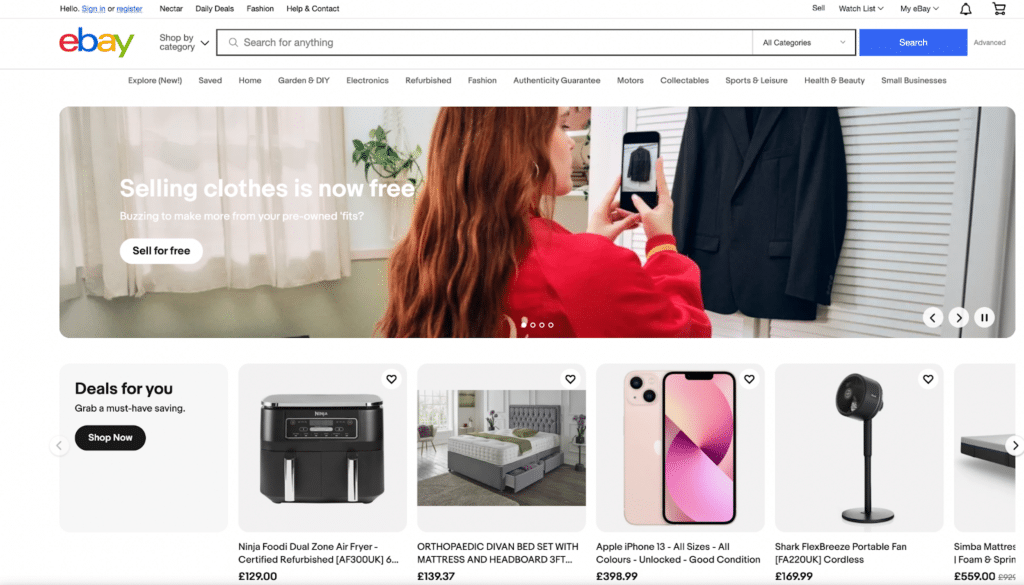
eBay is one of the largest online marketplaces globally, offering a wide range of products – including used electronics. This bustling digital bazaar provides a platform for both individual sellers and businesses to list their items for sale through auctions or fixed-price formats.
Pros of selling on eBay
- A staggering user base of over 135 million people.
- Flexible listing options (yay to choosing between auctions and fixed-price listings).
- International reach, allowing sellers to reach buyers worldwide.
Cons of selling on eBay
- High competition from other sellers.
- Selling fees for listing and selling items.
- Sellers must manage shipping and customer service independently.
Learn more about how to sell used electronics on Linnworks’ eBay podcast episode.
2. Amazon Renewed
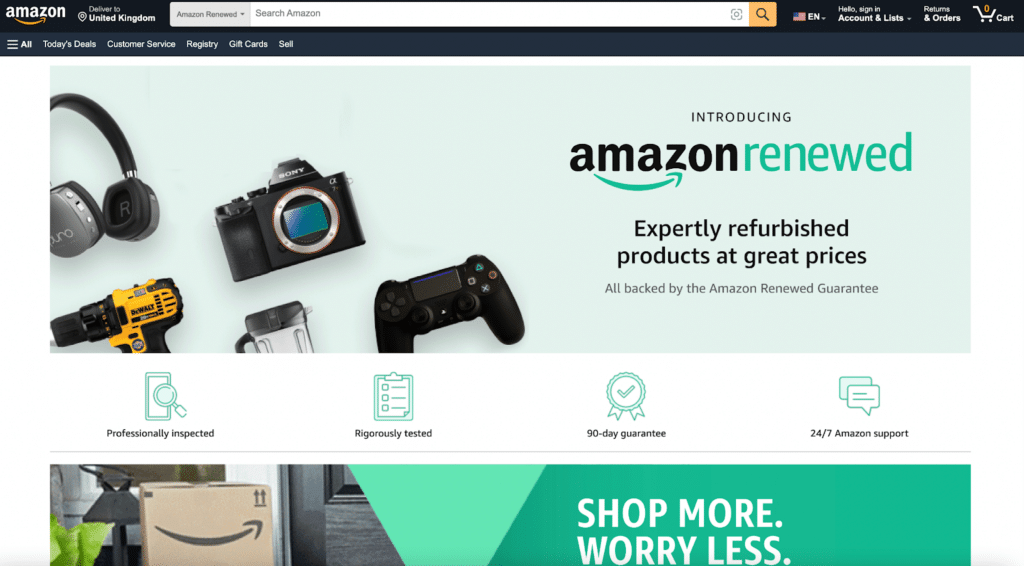
Amazon Renewed items are refurbished, pre-owned, or open-box electronic products that have been inspected and tested by an Amazon-qualified supplier to ensure they work and look like new. Best-selling categories include smartphones, laptops, tablets, and home appliances.
Pros of selling on Amazon Renewed
- Access to Amazon’s 310 million active users and Prime shipping benefits.
- Increased trust and credibility due to Amazon’s rigorous certification process.
- Ability to leverage Amazon’s fulfillment services for shipping and customer service.
Cons of selling on Amazon Renewed
- Strict requirements for product quality and condition.
- Higher fees compared to selling non-refurbished items on Amazon.
- Limited control over pricing and branding.
Find out more about how to sell used electronics on Amazon in our comprehensive guide.
3. Newegg

Newegg is, ironically enough, the new egg on the block in the second-hand selling game! A one-stop shop for all things tech-tastic, Newegg permits the sale of both new and refurbished electronics. It caters to a variety of hardware and software-savvy customers, offering a wide selection of products across a whole heap of brands.
Pros of selling on Newegg
- Dedicated marketplace for electronics enthusiasts.
- Trusted platform with a focus on technology products.
- Opportunities for sellers to reach a targeted audience of tech-savvy buyers.
Pros of selling on Newegg
- Competition from other sellers specializing in electronics.
- Less visibility compared to larger marketplaces.
- Limited trust in sales transactions based on consumer reviews.
4. Back Market
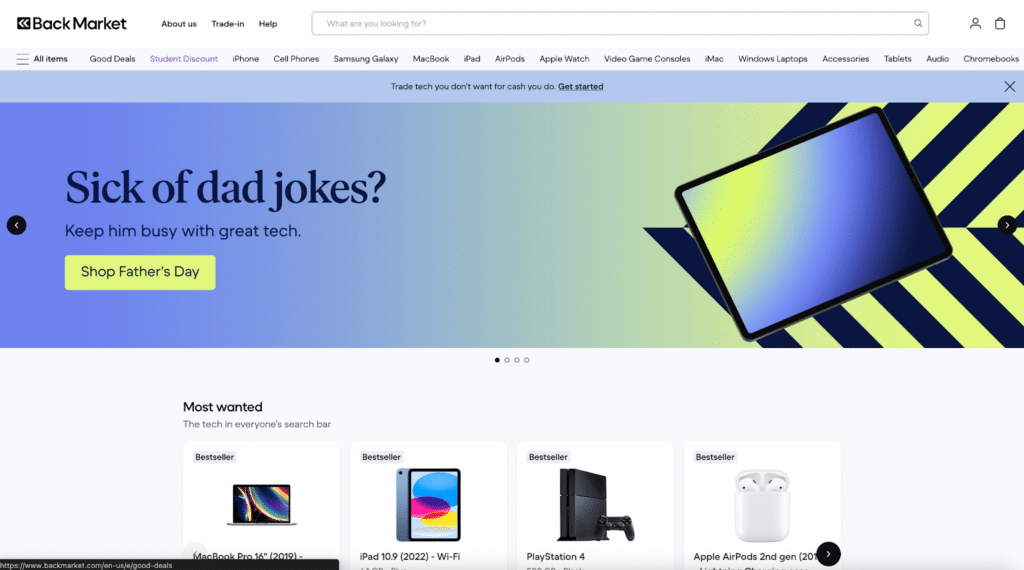
Looking to join an eco-conscious online tribe and embark on a mission to save the planet one refurbished gadget at a time? Then, you’ve found the perfect online space! Back Market is an easy-to-use platform that taps into growing consumer preferences for more eco-conscious purchases. It champions the circular economy by connecting online shoppers with certified refurbishers to reduce electronic waste – while also indulging the demand for basement bargain prices.
Pros of selling on Back Market
- Dedicated focus on the refurbished electronics market.
- Quality-focused certification processes that ensure consumer trust.
- Unique branding and marketing aimed at promoting sustainability.
Cons of selling on Back Market
- Limited reach, with ‘only’ 5 million registered customers.
- Fees for sellers may be higher compared to other platforms.
- Less visibility for sellers targeting a broader audience across a range of selling categories.
Find out more about how to sell used electronics on Back Market in our marketplace guide.
5. refurbed
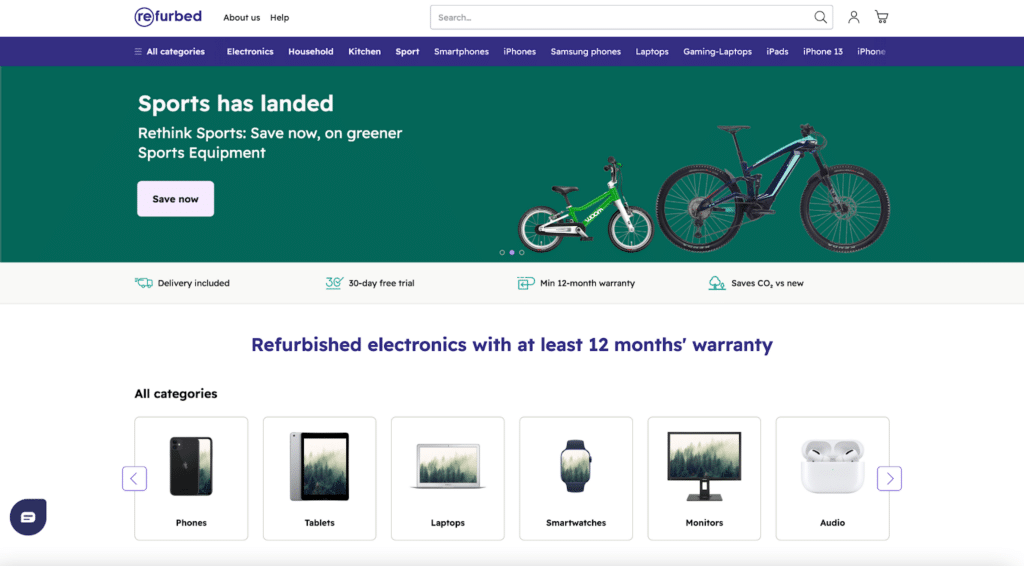
Bonjour, savvy sellers! refurbed is a European online marketplace where sustainability meets sophistication. Specializing in refurbished electronics, the platform focuses on offering high-quality items like phones, laptops, and tablets while promoting sustainability and affordability. In fact, the refurbed team is so eco-conscious, they plant a tree for every product sold to reduce their environmental impact even further.
Pros of selling on Refurbed
- Dedicated platform for products that look like new.
- Emphasis on sustainability and eco-friendly practices.
- Items come with at least 12 months of warranty.
Cons of selling on Refurbed
- Limited availability outside of Europe.
- Less brand recognition compared to larger platforms.
- Strict quality standards and certification process for sellers.
6. Walmart Restored
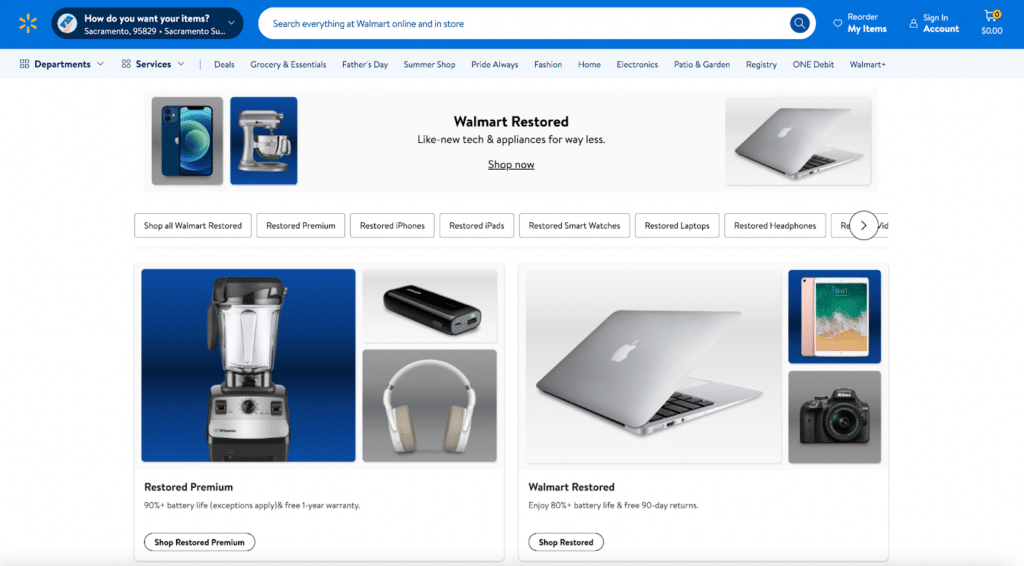
Unless you’ve been living under a retail rock for several years, you’ll already be aware of the multinational presence of the Walmart chain. While known primarily for new products, Walmart also offers a platform for third-party sellers to list used electronics alongside new items through Walmart Restored.
Pros of selling on Walmart Restored
- High visibility due to Walmart’s impressive 94% brand awareness ranking.
- A vast market base of over 438 million online shoppers per month.
- Access to Walmart’s fulfillment services for shipping and customer service.
Cons of selling on Walmart Restored
- Competition from other sellers, including those offering new electronics.
- Less focus on used electronics compared to dedicated platforms.
- More complex seller fees than some other platforms.
Get expert tips from the retail giant’s own strategy and development manager on how to reach more people and sell better on Walmart.
7. Swappa
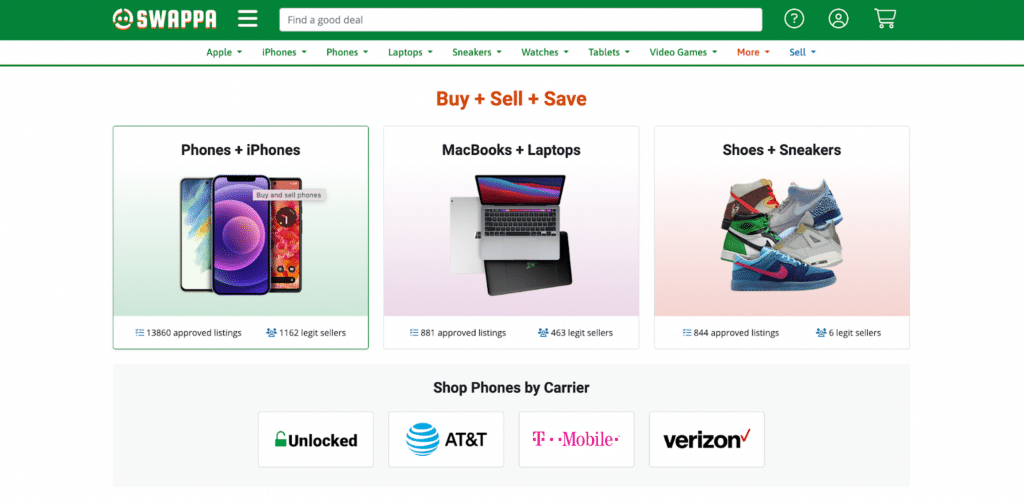
Swappa is a unique online marketplace for those looking to swap, sell, and shop their way to tech nirvana! Specializing in used electronics like smartphones, laptops, and gaming consoles, Swappa offers a peer-to-peer platform for buying and selling directly between users, with a focus on transparency and safety.
Pros of selling on Swappa
- Dedicated platform for used electronics, ensuring a focused audience.
- Direct communication between buyers and sellers for a transparent transaction process.
- Strict moderation to prevent fraud.
Cons of selling on Swappa
- Limited number of categories for sellers active in multiple markets.
- Smaller user base (around 1 million) compared to larger marketplaces.
- There’s no option to get a prepaid Swappa shipping label, making shipping riskier.
8. Best Buy
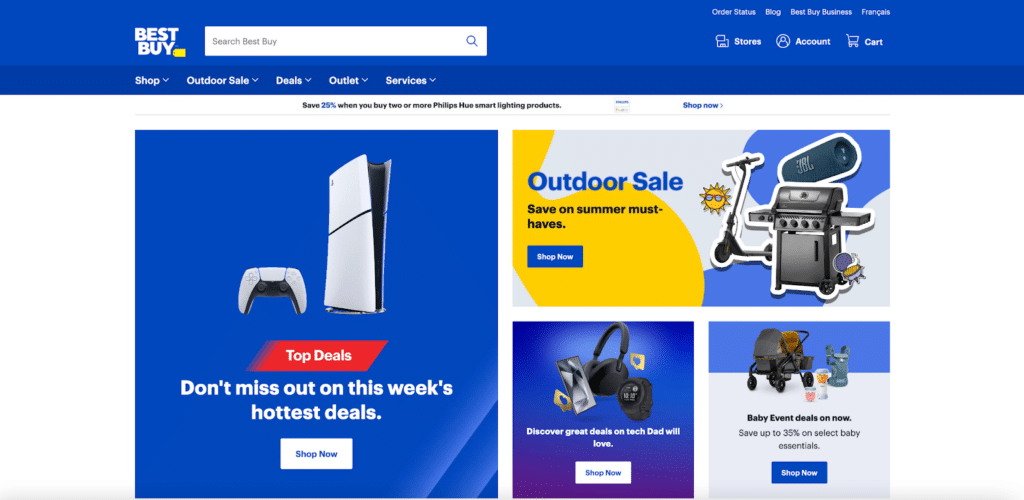
Best Buy is a leading retailer of consumer electronics, offering both new and certified refurbished products. While perhaps better known for its physical store locations selling new items, the chain also provides an online platform where third-party sellers can plug in their second-hand electronics and power up their bank balances.
Pros of selling on Best Buy
- Large customer base across online and physical store locations.
- Access to in-house fulfillment services for shipping and customer service.
- Potential for increased visibility, with a brand awareness score of 91%.
Cons of selling on Best Buy
- Competition from other sellers, including Best Buy’s own refurbished products.
- Less focus on used electronics compared to dedicated platforms.
- Sellers must pay a monthly fee to use the platform.
9. Gazelle
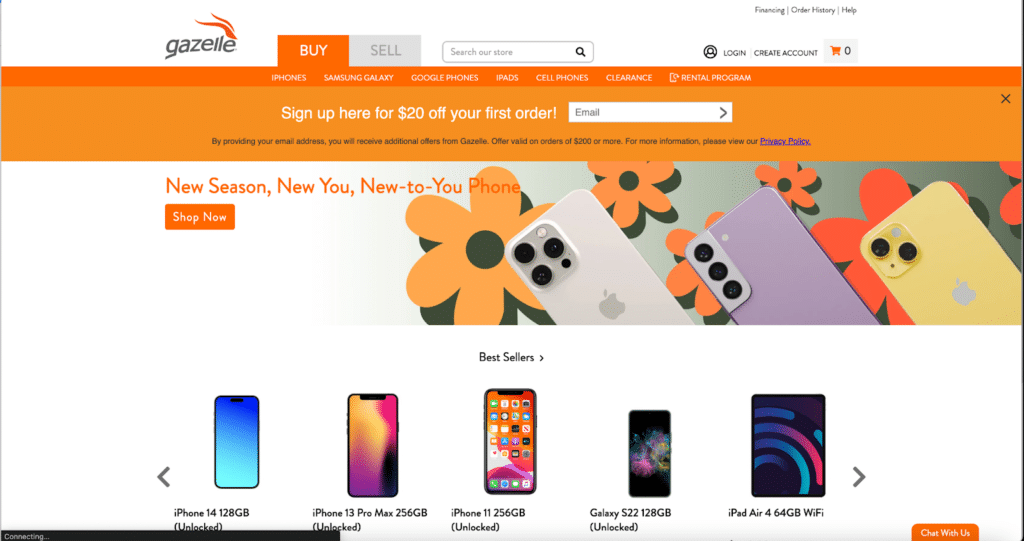
Ready to leap through the digital savanna of pre-owned electronics like a real-life Gazelle? Another platform specializing in buying and selling pre-owned electronics – primarily smartphones and tablets – Gazelle offers a streamlined process allowing users to trade in their old devices for cash or purchase certified pre-owned devices.
Pros of selling on Gazelle
- Simplified process for selling and buying pre-owned electronics.
- Opportunities to trade in as well as sell.
- Free shipping for sellers.
Cons of selling on Gazelle
- Limited number of electronics categories.
- Sale prices tend to be lower than market value.
- Less flexibility in negotiating prices compared to peer-to-peer marketplaces.
10. Decluttr

Decluttr is an online platform that allows users to sell a variety of items, including electronics, CDs, DVDs, and books. Although gaining popularity in the ecommerce realm, the platform is also widely used by everyday folk looking to make a bit of quick cash after a long overdue clear-out. After all, we all have a stash (or, in our case, several overflowing draws and cupboards) of old electronics, chargers, and accessories hanging around somewhere, right?
Pros of selling on Decluttr
- Wide range of accepted items for sale.
- Instant price quotes for electronics based on condition and market value.
- Free shipping for sellers with prepaid labels provided.
Cons of selling on Decluttr
- Selling prices are typically lower than on other platforms.
- Less control over pricing and negotiation compared to peer-to-peer marketplaces.
- Limited opportunities to charm buyers with a personal touch.
Sell used electronics successfully with Linnworks
Think you’ve worked out where to sell used electronics most effectively from this list of front runners? Well, don’t go jumping the gun just yet, as we’ve got one last curve ball to throw your way before we let you get on with your day.
You see, you needn’t pick just one. Selling across multiple platforms is much better for your burgeoning business. That’s where working with a dedicated e-commerce partner like Linnworks pays dividends.
Ready to take your sales game to the next level and shoot for the second-hand stratosphere? With Linnworks by your side, you can streamline inventory management, optimize listings, and maximize sales potential across a range of platforms, including Amazon, eBay, Back Market, refurbed, and Newegg.
Check out our complete list of marketplace integrations today, and get ready to skyrocket to success!
